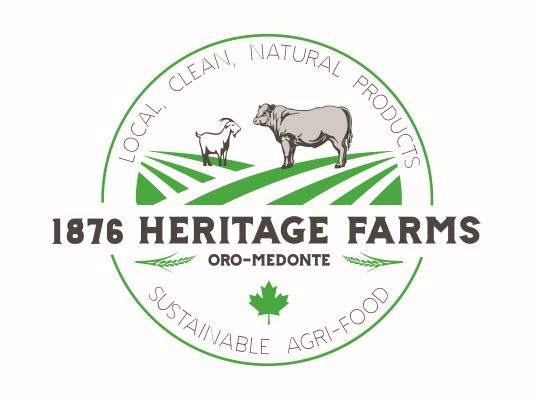What is Regenerative Beef?
Share
Regenerative beef is a term that has been gaining traction in sustainable agriculture and eco-conscious consumer circles. But what exactly does it mean? At its core, regenerative beef refers to beef produced through regenerative agriculture practices — a farming system that prioritizes soil health, biodiversity, and ecosystem balance. This method of farming aims to go beyond sustainability, actively improving the environment while producing high-quality, nutrient-dense meat.
In this comprehensive guide, we will explore the principles of regenerative agriculture, the benefits of regenerative beef, and why it is considered a game-changer in the agricultural industry.
Principles of Regenerative Agriculture
Regenerative agriculture is rooted in practices that mimic natural ecosystems. It is a holistic approach that encompasses:
Soil Health: Regenerative farming improves soil organic matter, which enhances water retention and reduces erosion.
Biodiversity: Introducing a diverse range of plants and animals helps create a resilient farming ecosystem.
Carbon Sequestration: By capturing carbon dioxide through soil and plant processes, regenerative farming helps mitigate climate change.
Rotational Grazing: This involves moving livestock to different areas of pasture to prevent overgrazing and allow grasses to regenerate.
Minimal Soil Disturbance: Practices like no-till farming preserve soil structure and microbial life.
How Does Regenerative Beef Fit Into This?
Regenerative beef is the result of livestock farming that adheres to these regenerative agriculture principles. Farmers raising regenerative beef prioritize practices that:
Restore degraded soils.
Support carbon sequestration.
Promote animal welfare and natural behaviors.
Produce beef free from synthetic inputs like chemical fertilizers and pesticides.
Benefits of Regenerative Beef
1. Environmental Benefits
Regenerative beef is a powerful tool for combating climate change. By improving soil health and increasing carbon sequestration, regenerative beef farming can offset greenhouse gas emissions. Additionally, the biodiversity fostered in these systems can restore habitats for pollinators and other wildlife.
2. Nutritional Advantages
Beef produced through regenerative practices tends to be higher in essential nutrients like omega-3 fatty acids, conjugated linoleic acid (CLA), and vitamins. This is because the cattle graze on diverse, nutrient-rich pastures rather than monoculture feeds.
3. Economic Sustainability for Farmers
Regenerative farming can reduce input costs for farmers by eliminating the need for chemical fertilizers and pesticides. This system also allows farmers to tap into premium markets where consumers are willing to pay more for ethically and sustainably produced beef.
4. Animal Welfare
In regenerative systems, cattle are raised in low-stress environments where they can express natural behaviors. They graze on open pastures rather than being confined to feedlots, which improves their quality of life.
Challenges in Adopting Regenerative Practices
While the benefits of regenerative beef are clear, transitioning to regenerative agriculture can be challenging for farmers. These challenges include:
- Initial Costs: Investing in new infrastructure, such as fencing for rotational grazing, can be expensive.
- Knowledge Gaps: Farmers need education and training to adopt regenerative techniques effectively.
- Market Access: Finding buyers who value and understand regenerative beef can be difficult.
Why Should Consumers Choose Regenerative Beef?
When consumers choose regenerative beef, they are not just buying a product; they are supporting a movement. Regenerative beef represents a shift towards a food system that values environmental health, animal welfare, and human nutrition. Here’s why consumers should make the switch:
1. Support for Ethical Farming
Buying regenerative beef ensures farmers receive fair compensation for their sustainable practices, encouraging the growth of ethical farming.
2. Better Flavor and Quality
Regenerative beef often has a richer, more complex flavor due to the cattle’s diverse diet and stress-free lifestyle.
3. Positive Environmental Impact
Every purchase of regenerative beef contributes to a farming system that actively repairs the environment rather than depleting it.
The Future of Regenerative Beef
As awareness grows, regenerative beef is becoming more accessible. Retailers and restaurants are beginning to recognize the value of regenerative practices, incorporating these products into their offerings. Additionally, platforms like Our Farm Store provide consumers with direct access to regenerative beef, making it easier to support this sustainable movement.
How to Identify Regenerative Beef
When shopping for regenerative beef, look for certifications and labels that indicate adherence to regenerative practices. Certifications such as “Regenerative Organic Certified” or “Grass-Fed and Finished” can be good indicators. Alternatively, buying directly from trusted local farmers or platforms like Our Farm Store ensures transparency and accountability.
Common Misconceptions About Regenerative Beef
1. It’s the Same as Grass-Fed Beef
While all regenerative beef is grass-fed, not all grass-fed beef is regenerative. Regenerative beef emphasizes ecosystem health and carbon sequestration, which go beyond simply feeding cattle grass.
2. It’s Too Expensive
Although regenerative beef can cost more upfront, its environmental and health benefits outweigh the price difference. Moreover, increased demand will likely make it more affordable over time.
3. It’s a Small-Scale Solution
Regenerative beef has the potential to scale up and transform the agricultural industry. By adopting these practices, even large-scale farms can contribute to a healthier planet.
Steps to Promote Regenerative Beef
Consumer Education: Informing consumers about the benefits of regenerative beef is crucial.
Policy Support: Governments can incentivize regenerative practices through subsidies and grants.
Collaborations: Partnerships between farmers, retailers, and organizations can expand access to regenerative beef.
Conclusion
Regenerative beef represents a paradigm shift in agriculture, offering a solution to some of the most pressing challenges in food production today. By prioritizing soil health, biodiversity, and ethical farming, regenerative beef provides a path forward for a more sustainable and resilient food system.
If you are interested in supporting this movement, consider purchasing regenerative beef from trusted sources like Our Farm Store. Together, we can drive positive change in agriculture and pave the way for a healthier planet and population.
